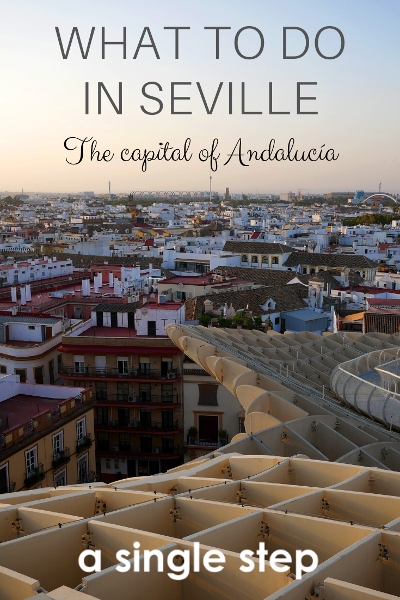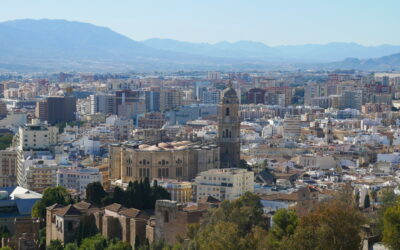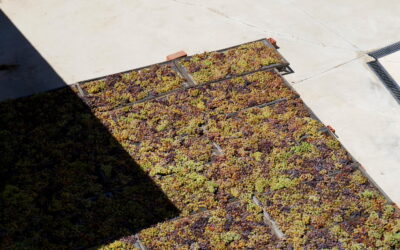Arriving in Seville after a few days travelling throughout Southern Spain, the first thing that hit me was the heat of the city, still hitting mid-30s in September. The walk through Plaza de la Alameda de Hércules to our fantastic apartment at Suites Alameda reminded me of the reasons that I love Andalucían culture: children playing in parks and in the square; friends making time for mid-morning coffee and tapas in the local cafés; and an inimitable laid-back attitude that is so demonstrable in Spanish life.
I knew I would love Seville. I love the Spanish way of life, one that’s reflected in the smallest pueblo or the big cities. There’s a focus on friends and family, on making time and taking time, and an inherent pride in their culture. Seville, like much of Andalucía, is a historic melting pot of cultures and architecture, with Jewish, Arab, and Christian heritage predominantly shaping the region. What I didn’t think about Seville however, was how much I would fall in love with the city in just 2 days.
History of Seville
Seville is a historically important city in Spain and indeed Europe. Its strategic position between the North-Eastern and Western regions of the Iberian Peninsula, coupled with the opportunities provided by its port on the Guadalquivir River, resulted in the city becoming important trade region in the early Centuries AD.
In 711, Seville fell to Arab rule, as did much of the Iberian Peninsula. Throughout the period to the 15th Century, the region of Seville flourished as the capital of the Almohades empire, and the wealth of this era can still be found in landmarks such as La Giralda, commissioned by caliph Abu Ya’qub Yusuf in 1171. Other attractions from this time includes Torre del Oro, the Macarena wall, and the neighbourhood of Triana.
Under Christian rule from the 16th Century, the city of Seville continued to flourish. After the discovery of the Americas in 1492, Queen Isabella I of Castile founded the Casa de Contratación in Seville as an authority body on trans-oceanic trade. This remained in Seville until the early 18th Century, when it was moved to Cádiz before ceasing to exist in 1790.
Throughout the 18th, 19th and early-20th Centuries, Seville began to decline due to the French revolution, civil wars and revolutions. The city began a period of regeneration in the 20th Century, capitalising on its port and commercial assets, and was named the capital of the autonomous region of Andalucía. In 1992, Seville welcomed the World Expo, which brought with it millions of visitors, new infrastructure, and investments to drive growth. Seville is now a thriving city with a steadily-increasing economy.
Things to do in Seville
Plaza de España (Spain Square)
Without doubt, my favourite thing to do in Seville is to visit the Plaza de España. The incredible semi-circle building is one of the most awe-inspiring pieces of architecture that I have ever seen. Built in 1928 for the Ibero-American Exposition, the 50,000 square ft. building today mostly houses Government is surrounded by a moat and faces a grand square containing the Vicente Traver fountain.
Whilst admiring the building, we stumbled upon some authentic, free, Flamenco taking place within one of the alcoves, which was one of the best moments of the whole trip for me. The Plaza de España is situated in the Parque de María Luisa, a 100-acre public park containing numerous squares, fountains and monuments.

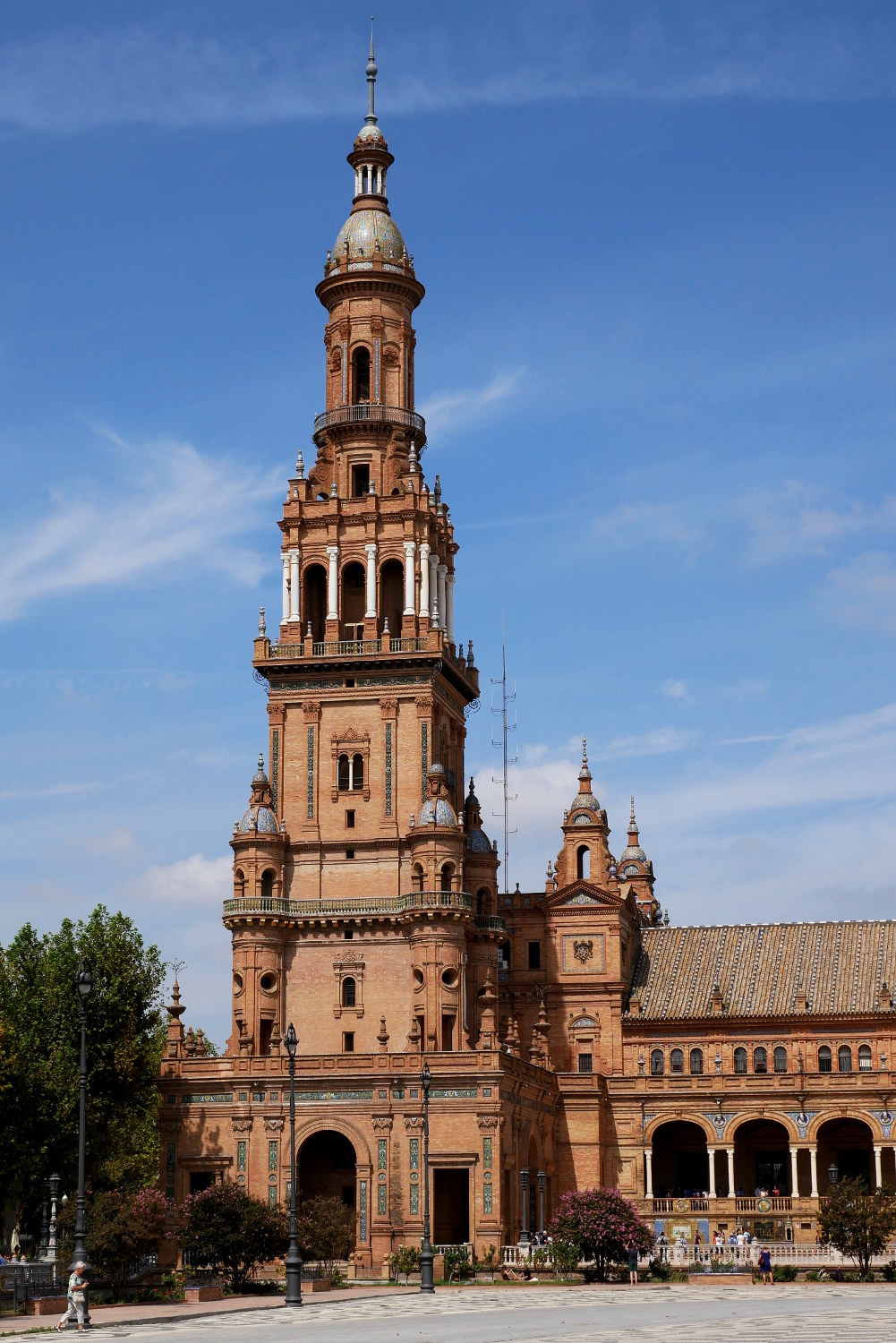

Catedral de Sevilla (Seville Cathedral)
Standing alongside the Plaza de España in terms of architectural grandiosity is the Catedral de Sevilla. Built throughout the 15th Century, the Catedral de Sevilla is the largest Gothic cathedral in the world, and was constructed on the site of the city’s mosque. Legend has it that the authorities wanted to build a cathedral at such a scale that it would shock the world – and its fair to say that they achieved that!
One of the standout features of the Cathedral is the mighty Giralda, standing at over 340ft. Incorporating the minaret of the original mosque that stood on the site, the bell-tower was built to resemble the minaret of the Koutoubia Mosque in Marrakech. Alongside the Giralda, other features of the Cathedral include the Tomb of Christopher Columbus, a stunning courtyard surrounded by orange trees, Sacristías, and treasures.
Tickets cost €9 and admission includes a visit to the Cathedral, the sacristies and the Renaissance chapter house, the treasure, the Giralda, the orange tree courtyard and the Church of the Savior located in the Plaza del Salvador.
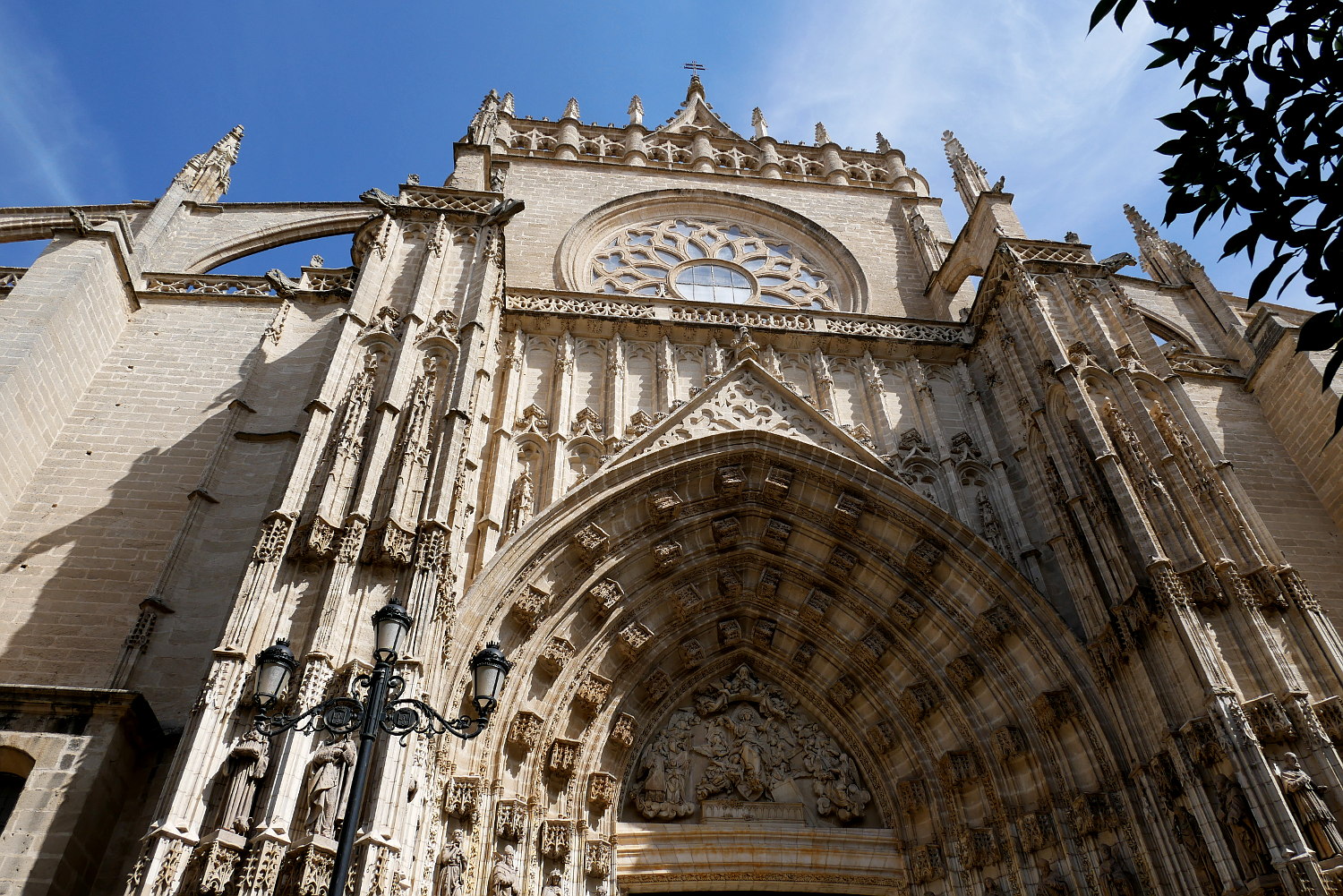
Real Alcázar de Sevilla (Royal Alcazar of Seville)
The Royal Alcázar of Seville is a UNESCO Heritage site located between the Plaza de España and the Catedral de Sevilla. The Mudejar-style building is still used as a place of Spain’s Royal Family in the city, and the architecture is a testament to the diverse mix of cultures that have resided in the city.
Significant areas of the Alcazár include the numerous stunning gardens; Patio de las Doncellas (The Courtyard of the Maidens); Puerta del León (Gate of the Lion), taking its name from the tiled Lion above the entrance; and the Salón de Embajadores (The Ambassadors Meeting Room), richly decorated and used by King Peter of Castile.
General admission is €12.50 and includes a tour through the complex and gardens.
Metropol Parasol – Las Setas de Sevilla (Mushrooms of Seville)
Metropol Parasol, popularly known as Las Setas de Seville due to their similarity to mushrooms, is an impressive wooden structure located in Seville’s Old Quarter. Claiming to be the largest wooden structure in the world, the Metropol Parasol was designed by German architect Jurgen Mayer in 2005 as an urban redevelopment project on a disused piece of land. During excavations, Roman and Moorish remains were found, which are now displayed in the Antiquarium.
The admission costs €3 to the upper level, which includes a walkway around the structure offering incredible views across the city. Try to head to Las Setas in the golden hour of sunset for the most spectacular views.

El Rinconcillo
For a taste of real Seville, El Rinconcillo is the oldest tapas bar in the city, serving Spain’s famous food since 1670. Inside, expect a traditional bar decorated with dusty bottles and jamon, and a chalkboard to note down your bill. El Rincillo is Seville’s worst-kept secret, so don’t expect to find a table easily. Instead, grab a drink, find a free barrel and soak up the atmosphere.

Triana and Torre del Oro
On the banks of the Guadalquivir River lies the famous neighbourhood of Triana. Connected to Seville by the Isabel II bridge, known fondly as the Puente de Triana, the colourful neighbourhood has a range of shops, restaurants and points of interest. The locals, trianeros, are fiercely proud of the neighbourhood, and enjoy local festivals, customs and traditions.
Wander along Calle Betis between along the waterfront between Puente de Triana and Puente de San Telmo, where you can enjoy panoramic views of Seville whilst appreciating some of Triana’s best restaurants and bars. Opposite the Puente de San Telmo, you can find the Torre del Oro, another remnant of Moorish rule, which is a 13th Century defensive tower located on the banks of the river.
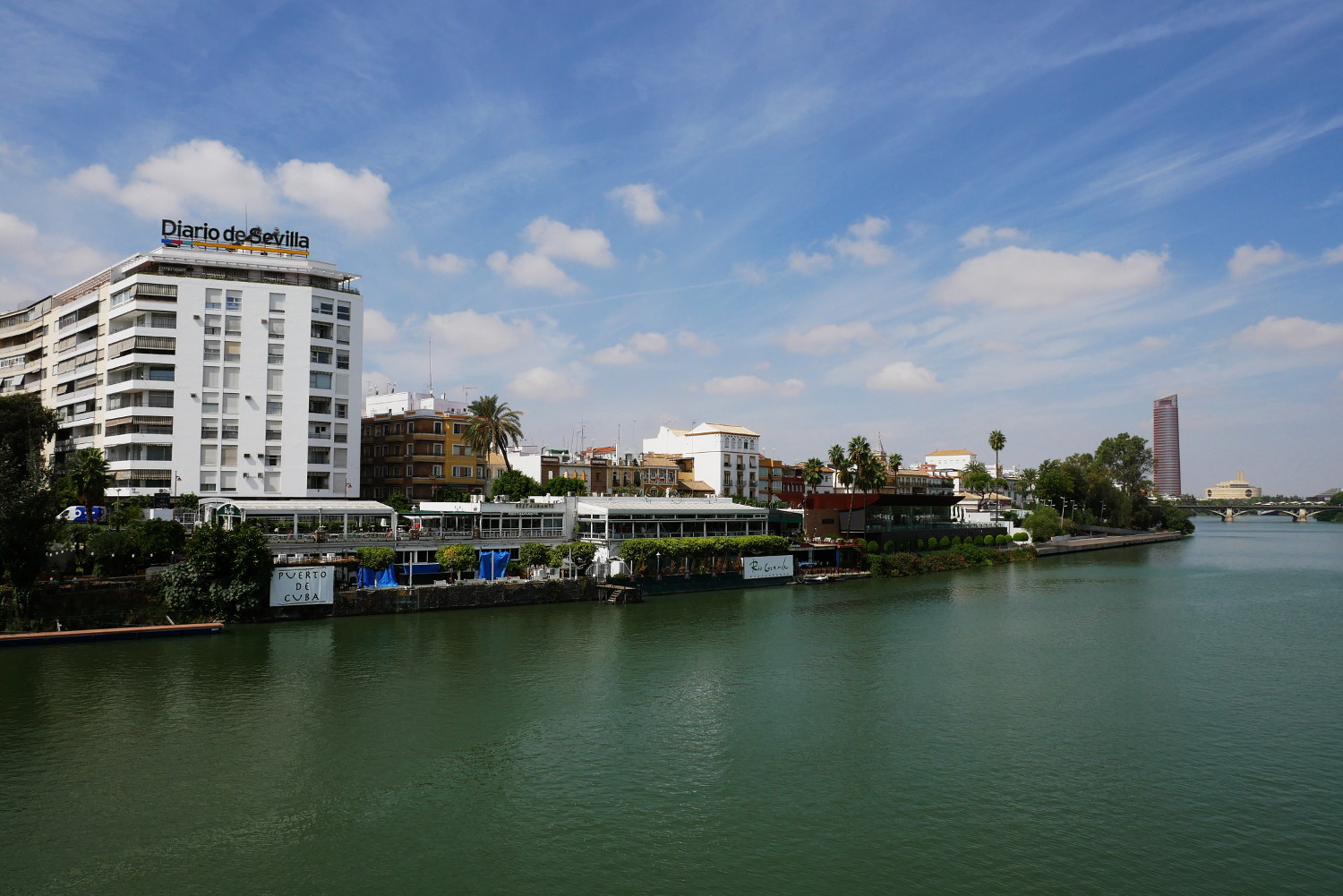


Ramón Sánchez-Pizjuán Stadium
A must for any sports fan when travelling is to visit the local football stadium, and that’s no different in Seville. The Ramón Sánchez-Pizjuán Stadium, home to Sevilla F.C. since 1958, is a famous stadium easily accessible by public transport or by foot from the centre of Seville.
Visitors can enjoy guided tours of the stadium, with an audio guide available in multiple languages. On the tour, you will learn about the History of Sevilla F.C. and the stadium which has hosted a number of iconic games, including the 1982 World Cup semi-final between West Germany and France and the 1986 European Cup Final between Steaua București and Barcelona. You can also view Sevilla’s numerous trophies in the museum, and enjoy access to areas such as the press room, changing rooms, and pitch-side access to the managers’ benches.
Bonus: Where to Stay in Seville
There are a variety of apartments and hotels in Seville to make your stay extra special, including the luxury Hotel Alfonso XIII and Eurostars Torre Sevilla, a hotel that occupies the top 13 floors of Andalucía’s tallest building.
Without a doubt, Seville made a massive impact on me, and the few days I spent in the city has just made me want to return. It was a city that reminded me why I love Spain and Andalucía in particulcar, and I place that I would love to explore more. If I was to return, let me know what else I need to visit in the comments below.


